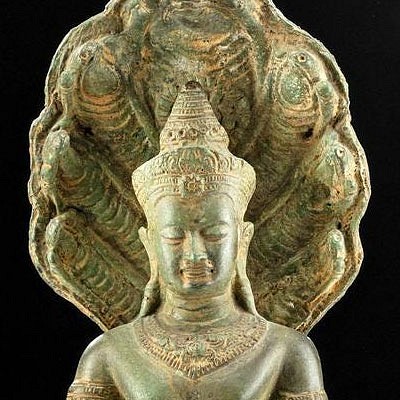Chancay Wood, Textile, & Hair Mask, ex-Museum
Lot 125
About Seller
Artemis Gallery
686 S Taylor Ave, Ste 106
Louisville, CO 80027
United States
Selling antiquities, ancient and ethnographic art online since 1993, Artemis Gallery specializes in Classical Antiquities (Egyptian, Greek, Roman, Near Eastern), Asian, Pre-Columbian, African / Tribal / Oceanographic art. Our extensive inventory includes pottery, stone, metal, wood, glass and textil...Read more
Estimate:
$1,000 - $1,500
Absentee vs Live bid
Two ways to bid:
- Leave a max absentee bid and the platform will bid on your behalf up to your maximum bid during the live auction.
- Bid live during the auction and your bids will be submitted real-time to the auctioneer.
Bid Increments
| Price | Bid Increment |
|---|---|
| $0 | $25 |
| $300 | $50 |
| $1,000 | $100 |
| $2,000 | $250 |
| $5,000 | $500 |
| $10,000 | $1,000 |
| $20,000 | $2,500 |
| $50,000 | $5,000 |
| $100,000 | $10,000 |
| $200,000 | $20,000 |
About Auction
By Artemis Gallery
Aug 10, 2021
Set Reminder
2021-08-10 12:00:00
2021-08-10 12:00:00
America/New_York
Bidsquare
Bidsquare : Museum-Deaccession | Asian & Pre-Columbian
https://www.bidsquare.com/auctions/artemis-gallery/museum-deaccession-asian-pre-columbian-7316
An interesting mix of de-accessioned Asian and Pre-Columbian Art from The Ashland University Museum in Ashland, OH, originally donated between 1994 to 1998. All lots from the Museum have been noted, as such. Artemis Gallery info@artemisgallery.com
An interesting mix of de-accessioned Asian and Pre-Columbian Art from The Ashland University Museum in Ashland, OH, originally donated between 1994 to 1998. All lots from the Museum have been noted, as such. Artemis Gallery info@artemisgallery.com
- Lot Description
Pre-Columbian, Central Coast Peru, Chancay, ca. 1000 to 1425 CE. A large funerary mask carved from wood, with a coiffure of human hair and a camelid wool headdress. The visage is stylized and painted with red cinnabar, white, and black pigments. The wooden panel has broad profile, wide enough to cover an entire face and additional shrouds or wrappings. The panel has two piercings on the lower corners with a braided fiber cord strung through the holes for attaching the mask to mummy wrappings. A simple rectangular mouth is carved into the surface below the protruding beak nose. Diamond-shaped eyes are painted in white and black. Human hairs have been attached to the brow to create a fringe above the eyes, and two longer locks hang down to the sides, framing the face. A woven headband of red and black alpaca or llama wool is wrapped around the brow. These masks were not portraits, but stylized representations of the person they were buried with, and this is a large example of the form! Size: 10" L x 10" W (25.4 cm x 25.4 cm)
Display stand for photography purposes only.
Provenance: ex-Ashland University Museum, Ashland, Ohio, USA, donated to Ashland University between July 1994 to December 1998
All items legal to buy/sell under U.S. Statute covering cultural patrimony Code 2600, CHAPTER 14, and are guaranteed to be as described or your money back.
A Certificate of Authenticity will accompany all winning bids.
PLEASE NOTE: Due to recent increases of shipments being seized by Australian & German customs (even for items with pre-UNESCO provenance), we will no longer ship most antiquities and ancient Chinese art to Australia & Germany. For categories of items that are acceptable to ship to Australia or Germany, please contact us directly or work with your local customs brokerage firm.
Display stands not described as included/custom in the item description are for photography purposes only and will not be included with the item upon shipping.
#166228Earthen encrustations on the wood and hair. Cavity due to old inactive insect activity on the cheek as shown, and second cavity on the verso edge. Discoloration and fraying to textile. Hair and textile are remarkably intact, as are the pigments.Condition
- Shipping Info
-
All shipping is handled in-house for your convenience. Your invoice from Artemis Gallery will include shipping calculation instructions. If in doubt, please inquire BEFORE bidding for estimated shipping costs for individual items.
-
- Buyer's Premium



 EUR
EUR CAD
CAD AUD
AUD GBP
GBP MXN
MXN HKD
HKD CNY
CNY MYR
MYR SEK
SEK SGD
SGD CHF
CHF THB
THB













